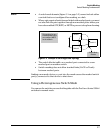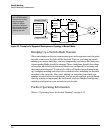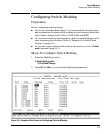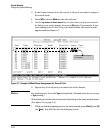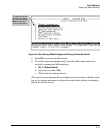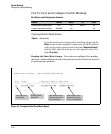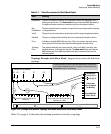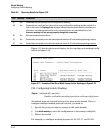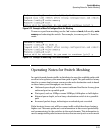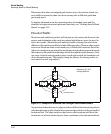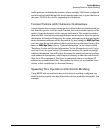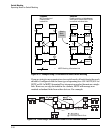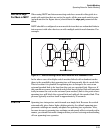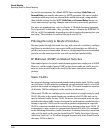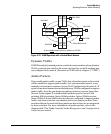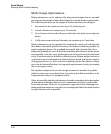
Switch Meshing
Operating Notes for Switch Meshing
Figure 5-12. Example of How To Configure Ports for Meshing
To remove a port from meshing, use the "no" version of mesh, followed by write
memory and rebooting the switch. For example, to remove port C1 from the
mesh:
Figure 5-13. Example of Removing a Port from the Mesh
Operating Notes for Switch Meshing
In a switch mesh domain traffic is distributed across the available paths with
an effort to keep latency the same from path to path. The path selected at any
time for a connection between a source node and a destination node is based
on these latency and throughput cost factors:
■ Outbound queue depth, or the current outbound load factor for any given
outbound port in a possible path
■ Port speed, such as 10Mbps versus 100Mbps; full-duplex or half-duplex
■ Inbound queue depth, or how busy a destination switch is in a possible
path
■ Increased packet drops, indicating an overloaded port or switch
Paths having a lower cost will have more traffic added than those having a
higher cost. Alternate paths and cost information is discovered periodically
and communicated to the switches in the mesh domain. This information is
used to assign traffic paths between devices that are newly active on the mesh.
5-15



